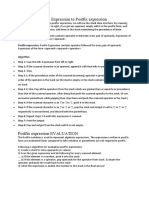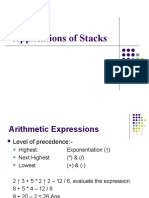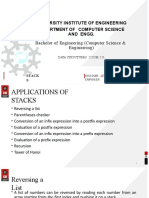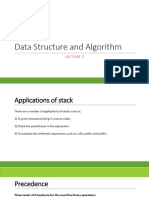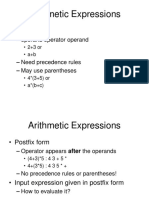0% found this document useful (0 votes)
36 views2 pagesAlgorithm To Convert Infix To Postfix
The document outlines an algorithm for converting infix expressions to postfix expressions using a stack. It details the steps involved, including handling operands, operators, and parentheses, with an example provided for clarity. The document also highlights the advantages of postfix expressions, particularly their ease of evaluation by machines due to inherent operator precedence.
Uploaded by
Amritanshu TiwariCopyright
© © All Rights Reserved
We take content rights seriously. If you suspect this is your content, claim it here.
Available Formats
Download as PDF, TXT or read online on Scribd
0% found this document useful (0 votes)
36 views2 pagesAlgorithm To Convert Infix To Postfix
The document outlines an algorithm for converting infix expressions to postfix expressions using a stack. It details the steps involved, including handling operands, operators, and parentheses, with an example provided for clarity. The document also highlights the advantages of postfix expressions, particularly their ease of evaluation by machines due to inherent operator precedence.
Uploaded by
Amritanshu TiwariCopyright
© © All Rights Reserved
We take content rights seriously. If you suspect this is your content, claim it here.
Available Formats
Download as PDF, TXT or read online on Scribd
/ 2













